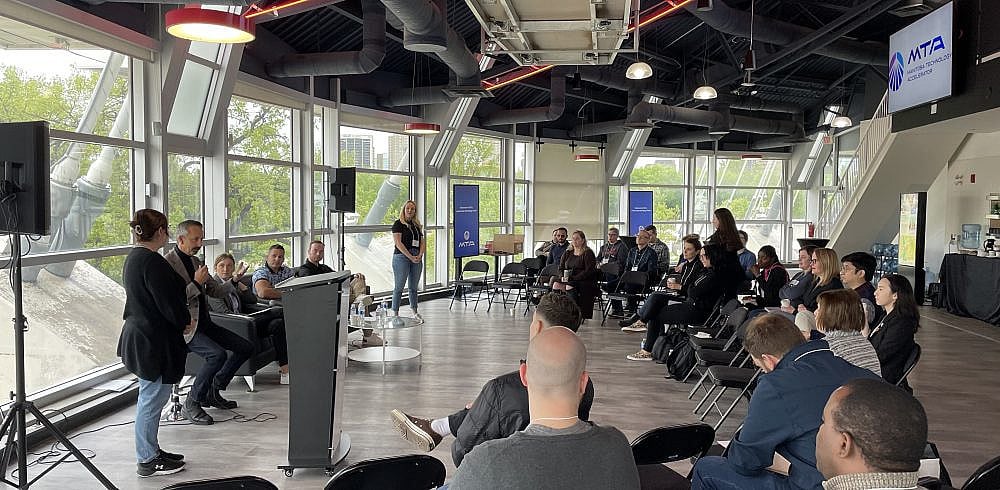In the pursuit of labour market equity, a clear understanding of underrepresentation is essential. The Winnipeg Chamber of Commerce hosted a CODE workshop on March 7, 2024, titled “Navigating Underrepresentation: Insights into Canada’s Labour Market.” It offered both a clear definition of underrepresentation and a strategic framework for addressing the issue.
Defining Underrepresentation
Kashyap Arora, an economist with the Labour Market Information Council (LMIC) provided an academic lens on the definition of underrepresentation. Kashyap argued that not all groups are represented equally in employment and this imbalance often stems from systemic barriers that disadvantage certain populations. Kashyap outlined several approaches to defining underrepresentation:
- Comparative Analysis: Underrepresentation can be determined by comparing a group’s labour force participation with their demographic proportion within the general working-age population.
- National Benchmarks: Comparisons against the Canadian average for labour force participation or employment rates spotlight disparities but may not capture the full complexity.
- Dominant Group Baseline: Measuring against a specific dominant demographic, like Canadian-born men aged 25 to 54, offers a focused view but risks reinforcing implicit biases.
- Demographic Parity: This method involves contrasting a group’s workforce engagement against a demographically similar group with expected employment parity.
- Sector-Specific Scrutiny: Examining representation within high-earning sectors can reveal access imbalances to lucrative jobs and may also reflect certain biases about occupational value.
- Data Visibility: At times, it’s the lack of detailed data that shadows a group’s true market presence, hindering research and policy formation that genuinely reflects diverse experiences.
However, Kashyap pointed out not all under-represented groups seek the same equity measures. While some may be numerically underrepresented, they might not be pursuing active measures for social justice.
Read more about the LMIC’s approach on their featured publication Understanding under-representation in Canada’s labour market: An analysis of definitions and approaches.
Access diverse talent and promote inclusivity
Anna Janik-Kelly, serving as the Associate Dean at Red River College Polytechnic outlined actionable strategies that empower employers to tap into the rich pool of diverse talent that students represent. Anna emphasized the dual benefit of such inclusivity — where students bring fresh perspectives and innovative solutions to the workplace, while employers enjoy the vibrancy and competitive edge that diversity affords.
Crafting Solutions for Inclusivity
Jamil Ahmed, working as an Economic Analyst at The Chamber highlighted that labour-related challenges, including skill acquisition and retention, are intensified for these groups by barriers like organizational culture and systemic issues in entrepreneurship.
Jamil proposes actionable strategies to foster inclusive growth:
- Recruitment Innovation: Deploy specialized outreach and structured interviews to overcome unconscious biases, ensuring recruitment practices welcome under-represented groups.
- Retention through Equity: Implement transparent promotion and pay processes, alongside mentorship and diversity training, to support underrepresented groups’ professional growth.
- Data-Driven Decision-Making: Utilize workforce demographic data to track underrepresentation and assess the effectiveness of diversity initiatives, holding organizations accountable to their equity goals.
- Building Bridges with Partnerships: Partner with educational and community organizations to offer programs like internships and apprenticeships tailored for diverse individuals, thereby facilitating workforce entry.
- Supplier Diversity: Prioritize economic inclusivity through diverse supplier initiatives, fostering a supply chain that reflects the community’s diversity.
The discussions led by experts Kashyap, Anna, and Jamil at the CODE Workshop underscored the importance of a clear definition of underrepresentation, equitable recruitment, retention strategies, and data-driven decision-making in achieving labour market equity. By implementing these strategies, employers can tap into diverse talent pools, promote inclusion, and foster a more equitable and vibrant economic environment.
For more information on how you can improve your organizational DEI efforts, explore our DEI programming: CODE.




